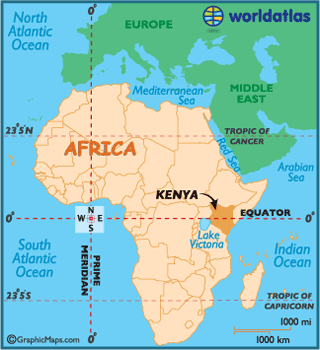ข่าวสารประเทศตลาดใหม่และอื่นๆ

Is impact investment the answer to Kenya’s socio-economic challenges?
13 มกราคม พ.ศ. 2558
Kenya is being sold the idea that impact investment that goes beyond the profit motive alone and instead seeks to generate triple bottom line returns namely social, environmental and financial, is the smartest way to structure investment into the continent. It is argued that the triple bottom line focus is warranted given Kenya’s socioeconomic issues which range from poor health and education services, to poor infrastructure, environmental issues, inadequate housing, water and sanitation structures and a healthy representation of low income citizens in the general population.
The Rockefeller Foundation states that, ‘Impact investing could unlock substantial for-profit investment capital to complement philanthropy in addressing pressing social challenges’. In terms of market size some argue that the industry could grow from around US$50 billion in assets to US$500 billion in assets within subsequent decades. Clearly this is becoming a big deal globally and already in Kenya there are numerous impact investment activities on the ground funding enterprises that seek to generate triple value. Bear in mind that Corporate Social Investment (CSI) is often not considered impact investing as the core focus of the corporation is profit not mission and CSI is a conduit of funds into social activities that do not inform core business. There is a spectrum along which impact investments lie; on one hand are those that are more mission oriented and on the other end are those that are more profit oriented but both share a commitment to generate economic, social and/or environmental (hereafter ‘social’) returns.
 But is marrying impact and profit realistic? Some argue that Nairobi has already hit an impact investment bubble where, ‘too much money chases too few investment-ready companies, weak performers are propped up when they should really be driven out of business by superior competitors’. From a logical point of view, impact investment makes sense and if such investments do deliver triple returns it is an effective one in all pill for Kenya’s holistic development. Further, given Kenya’s weak regulatory framework and even poorer implementation of policies and law, it is a good idea to welcome investors who seek to work honestly, responsibly and with economic and social development in mind. Some companies pollute the environment, defy labour laws and exploit local communities as they conduct business and the truth is that they can get away with it because even if there are laws in place to prevent such phenomena from occurring, corruption and kickbacks means business can get away with unsavoury behaviour. Thus welcoming ethical investors creates an automatic buffer against such delinquency. In addition, when social financing is done in partnership in communities to build their entrepreneurial capacity to tap into their resources, develop assets and ensure assets benefit and are owned by the community, some dramatic socioeconomic graduation can occur. Impact investors are already active in Kenya are scaling up SMEs and strengthening the positive social and environmental footprint of the business in which they invest. This is an industry that is set to grow in the country and this provides the incentive to better understand how it functions.One problem with impact investing is that the definition given in this article is one of many. For an industry that wants to scale, there is no consensus on what qualifies as impact investment. For example, some argue that impact investors have to expect a lower than market rate of financial return because those with market rate returns should be easily absorbed by the market. Others, such as the UN, define impact investing as any investment that has the intent to create benefits beyond financial return. The problem with ambiguity with basics such as definitions is that any enterprise can masquerade as an impact focussed investment and give a distorted representation of how big the impact market it. Further, as Stanford Social Innovation Review states, it creates, ‘a lot of confusion about when impact investing works and when it doesn’t’. So how can Kenya be sure we are benefitting from impact investment when no one agrees on what that exactly means? Secondly, categorising certain investments as ‘impact investing’ insinuates that other types of investment do not make any impact beyond financial gain. Yet we know that SMEs all over the country, especially those active in poor communities, do not self-identify as impact enterprises, yet they are creating impact in their communities. They provide employment for thousands, support the development of employees and even provide medical care for them. Yet they do not formally fall under the umbrella of impact investment. It makes one wonder whether impact investment is a just a new trend to mop up excess liquidity.Another concern is that trying to marry people, planet and profit is not always profitable, especially when dealing with genuinely poor communities that have little market power and many needs. Such communities are the ones that need low cost services the most, yet , ‘delivering at a price point the poor can afford almost always translates into very small margins’ meaning that impact businesses often have to be subsidised over long periods of time. Therefore, are they viable market players? Many impact investments need subsidies which, may be prolonging the life of poor business ideas and products. Further, a chronic problem in the impact industry is the difficulty in measuring and demonstrating impact. There are so many models available on how to measure impact and different impact investors use different models thereby generating different, incomparable data sets. So how can one call it impact investment if measuring the impact has not been truly sorted out in a manner where comparisons between projects can be made?So clearly impact investment is a mixed bag. It is a commendable approach to investment that Kenya should seek to benefit from while cognisant of the pitfalls.
But is marrying impact and profit realistic? Some argue that Nairobi has already hit an impact investment bubble where, ‘too much money chases too few investment-ready companies, weak performers are propped up when they should really be driven out of business by superior competitors’. From a logical point of view, impact investment makes sense and if such investments do deliver triple returns it is an effective one in all pill for Kenya’s holistic development. Further, given Kenya’s weak regulatory framework and even poorer implementation of policies and law, it is a good idea to welcome investors who seek to work honestly, responsibly and with economic and social development in mind. Some companies pollute the environment, defy labour laws and exploit local communities as they conduct business and the truth is that they can get away with it because even if there are laws in place to prevent such phenomena from occurring, corruption and kickbacks means business can get away with unsavoury behaviour. Thus welcoming ethical investors creates an automatic buffer against such delinquency. In addition, when social financing is done in partnership in communities to build their entrepreneurial capacity to tap into their resources, develop assets and ensure assets benefit and are owned by the community, some dramatic socioeconomic graduation can occur. Impact investors are already active in Kenya are scaling up SMEs and strengthening the positive social and environmental footprint of the business in which they invest. This is an industry that is set to grow in the country and this provides the incentive to better understand how it functions.One problem with impact investing is that the definition given in this article is one of many. For an industry that wants to scale, there is no consensus on what qualifies as impact investment. For example, some argue that impact investors have to expect a lower than market rate of financial return because those with market rate returns should be easily absorbed by the market. Others, such as the UN, define impact investing as any investment that has the intent to create benefits beyond financial return. The problem with ambiguity with basics such as definitions is that any enterprise can masquerade as an impact focussed investment and give a distorted representation of how big the impact market it. Further, as Stanford Social Innovation Review states, it creates, ‘a lot of confusion about when impact investing works and when it doesn’t’. So how can Kenya be sure we are benefitting from impact investment when no one agrees on what that exactly means? Secondly, categorising certain investments as ‘impact investing’ insinuates that other types of investment do not make any impact beyond financial gain. Yet we know that SMEs all over the country, especially those active in poor communities, do not self-identify as impact enterprises, yet they are creating impact in their communities. They provide employment for thousands, support the development of employees and even provide medical care for them. Yet they do not formally fall under the umbrella of impact investment. It makes one wonder whether impact investment is a just a new trend to mop up excess liquidity.Another concern is that trying to marry people, planet and profit is not always profitable, especially when dealing with genuinely poor communities that have little market power and many needs. Such communities are the ones that need low cost services the most, yet , ‘delivering at a price point the poor can afford almost always translates into very small margins’ meaning that impact businesses often have to be subsidised over long periods of time. Therefore, are they viable market players? Many impact investments need subsidies which, may be prolonging the life of poor business ideas and products. Further, a chronic problem in the impact industry is the difficulty in measuring and demonstrating impact. There are so many models available on how to measure impact and different impact investors use different models thereby generating different, incomparable data sets. So how can one call it impact investment if measuring the impact has not been truly sorted out in a manner where comparisons between projects can be made?So clearly impact investment is a mixed bag. It is a commendable approach to investment that Kenya should seek to benefit from while cognisant of the pitfalls.
Cr:https://anzetsewere.wordpress.com/2015/01/12/is-impact-investment-the-answer-to-kenyas-socio-economic-challenges/
Cr:http://www.worldatlas.com/webimage/countrys/africa/keafrica.gif
-

MOVES-Kenya's bourse picks investment banker Odundo as CEO
14 มกราคม พ.ศ. 2558 -

Cameroon: 45 billion investments to create 1,600 jobs in private sector
15 มกราคม พ.ศ. 2558 -

CfC named the best investment bank in Kenya
16 มกราคม พ.ศ. 2558 -
South Africa fund manager eyes Kenya entry
19 มกราคม พ.ศ. 2558

